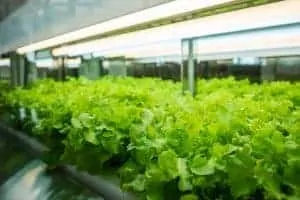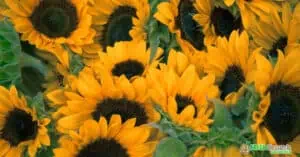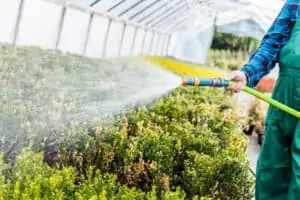
Organic Gardening
You hear the term organic gardening tossed around much these days.
There was a time in the pre-industrial era when there was no difference between gardening and organic gardening.
You just planted seeds you saved and added some manure to the soil each year.
Come to think of it, my grandfather probably didn’t even know the difference either in the 1950s.
He just saved his banana peels and eggshells to add to his tomato plant each and every year.
Everyone has a stance on how they choose to garden whether it be conventionally or organically.
My stance is pretty basic. As a steward of the earth, I try to use organic means whenever possible.
I still use some chemical fertilizers in very minute amounts when I find it necessary to be very precise in knowing the proper NPK.
So I
would say I am about 95% organic when it comes to vegetable gardening
which is good enough for me and good for the entire ecosystem.
We will touch on all the different methods of organic gardening as well as heirloom seed saving.
When Did The Organic Movement Begin?
The term organic was coined by Lord Northbourne in the 1940s. It was actually the term “organic farming”.
The well known Rodale’s brought much of these principles to the mainstream in the early 1940s. Rodale, started a magazine called Organic Farming and Gardening that highlighted many organic farming principles.
The Rodale’s also published a well-known book in the late 1950s called The Encyclopedia of Organic Gardening. The revised edition is a staple in Green thumb Gardeners library of gardening books.
By the 2000s the worldwide market for organic products exploded with a huge surge in demand.
It was popularized with such grocery stores such as Trader Joe’s, Whole Foods & local farmer’s markets.
Organic Fundamentals
The core principles of organic practices and techniques really boil down to a few categories:
Gardening Techniques:
- Design of your Garden – Keeping this in mind can dramatically help with reduction of wasted energy. (ie. companion planting)
- Overall Landscaping – This ties into the design of the garden, but this is an overall planning of your entire area.
- Planting techniques – Do you densely plant your vegetables together to help minimize water usage? It is questions like these that help round out organic practices
- Propagation, Seed Starting and Seed Saving – Controlling the type of plants and how you start and save your seeds will give you a bit more control over your organic practices
Management of Your Garden:
- Pest mitigation – ways to reduce the number of pests in your garden safely
- Beneficial insects & animals – ways to attract good insects and yes even animals such as birds to help combat unwanted critters.
- Compost, Fertilizers & Other Beneficial Soil techniques – Healthy, nutrient-rich soil is the crux of a successful organic vegetable garden
- Plant Diseases – knowing how to remediate & prevent these diseases will go a long way in your gardening foray
- Mulching & other Water Saving techniques – These techniques focus on being a responsible gardener by reducing, resusing, & recycling as much as you can.
Vegetables & other Plants:
- Vegetable Crops – you need vegetables for a vegetable garden. We cover some of the best ways to get you some healthy food.
- Fruit, Herbs, & other Edible plants – these are all the other edible types of food that you can grow.
- Ornamental plants – Believe it or not this also ties into a successful vegetable garden. Sometimes, these types of plants help to attract beneficial insects.
These core principles all intertwine with each other. We will delve into these principles to help you get an idea of what you can do to keep with the organic mantra.
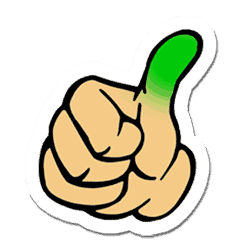
Green thumb Gardener Book Recommendation:
This book or encyclopedia is one of the best known books that some could say really begin with the organic movement.
Much of our inspiration with organic gardening was sparked through some of the insights this encyclopedia enriched us with.
Rodale's Ultimate Encyclopedia of Organic Gardening: The Indispensable Green Resource for Every Gardener
Rodale's Ultimate Encyclopedia of Organic Gardening has been the go-to resource for gardeners for more than 50 years, and the best tool novices can buy to start applying organic methods to their fruit and vegetable crops, herbs, trees and shrubs, perennials, annuals, and lawns.
This thoroughly revised and updated version highlights new organic pest controls, new fertilizer products, improved gardening techniques, the latest organic soil practices, and new trends in garden design.
Garden Design & Landscaping
Organic gardening starts with great garden design & landscaping. It is not enough to just throw out a bunch of plants and hope for the best.
You should simply step back and take a look at your space and draw up a simple plan of where you want your garden to lie in relation to everything in the surrounding areas.
Don’t over complicate this. The layout of your garden could simply be where the location of where to grow your vegetables and where to plant a new tree.
This doesn’t require a landscape architect or backhoes to move land. The most basic needs that should be considered or planned before starting an organic garden are:
- Sunlight – You need to select an area that will satisfy the basic needs of your plants. Record the number of hours of sunlight this area has over the course of the year. Most plants require at least 5-6 hours of sunlight.
- Soil – Good soil is key to growing any type of plant. The location of your garden should consider the quality of soil in mind. You either need to build great soil or possibly use container to garden.
- Water Access – A good source of water is necessary for plants to grow. A simple hose or the use of a watering can is all you need. Just keep in mind how far your water source is from your garden.
Don’t fret if you are located in an area where the soil is not great or the available sunlight is minimal. You can always utilize some of the container gardening methods to help work around these potential issues.
Check out our page dedicated to container gardening here if you need some guidance on container gardening.
The easiest way to design your garden area is to do a basic layout on paper. Draw a crude outline of all the structures and existing features.
Then just use that to do a rough sketch of your proposed garden are that you want to create.

Planting Techniques
There are many ways to plant a garden. It all comes down to your garden plan. By now, you should have an area picked out where you want to start your organic garden.
Types of Gardens
You can slice and dice up the different garden types into many different types based off of the techniques.
We will keep it simple and go with 4 different systems: Row Gardening, Square Foot Gardening, Companion Planting, & Permaculture Gardening. This is not the complete list, but they are the most common one practiced in most gardens today.
1 | Row Gardening (Conventional Farming)
You can take the traditional way of planting a garden that most conventional farmers use. This type of gardening is called row gardening.
This type of gardening utilizes rows for each plant. The idea behind this type of gardening was that it was easy for the machinery to move throughout the fields.
Each row was spaced apart enough to allow for easy access to plant, harvest, or apply fertilizers, etc.
It is not the best planting technique in my opinion for most gardeners.
PROS
- Simple plan, 1 vegetable per row
- Organized to know where plants are
- Very easy access to plant & harvest
CONS
- Underutilized soil space
- Impractical for small gardens
- Crop rotation is necessary
2 | Square Foot Gardening
This type of garden is very easy to setup and follow. It was one of the first types of garden that I employed when I bought my first home and starting gardening there.
Essentially, you garden in a square foot or grid type area. All your vegetables are laid out according to the approximate size they grow and space needed.
Unfortunately, it has its drawbacks and does not utilize the space as well as it can. It does make for an easy introduction into gardening.
YOUTUBE REVIEW: Square Foot Gardening Book Review | Learn Raised Bed Gardening Planner in a Box.
PROS
- Easy to start & arrange your vegetables
- Easy to start & arrange your vegetables
- Very easy to adapt & use advanced gardening techniques
CONS
- Very rigid system
- Can actually plant more in space
- No love for limited space gardeners
3 | Companion Planting
Companion planting in your garden is a useful gardening technique. This gets lumped into a garden type because it is a way on how to approach where you plants will grow in relation to each other.
You can combine this with either row gardening or square foot gardening to some degree if you really wanted to.
This method of gardening is interplanting different varieties of plants and flowers to promote beneficial symbiosis. It can really be useful when you are looking for organic ways to garden.
READ MORE: Companion Planting Chart | Epic Guide to Interplanting
PROS
- Helps with repeling unwanted pests
- Promotes better growth of plants
- Easily adaptable
CONS
- Requires a bit of plant knowledge
- Not much research in effectiveness
- Limited results
4 | Permaculture
This system of gardening is definitely a more advanced way to garden. It is a bit difficult to really give you a clear definition of this type of gardening.
Permaculture is more of a philosophy of how to align with nature in a develop a more natural ecosystem. It does not just involve plants, but may also consider insects, animals, water features, and other natural systems.
An extreme example would be to create a house that is built out of a hill and uses the surrounding structure to provide warmth and shelter.
A more simple approach would be a no dig garden. This type of garden is design to not dig or till. You simply keeping add composted material to your garden beds.
This method sounds pretty lazy, but it is very efficient & beneficial especially for organic gardening.
PROS
- Best methods aligned with organic gardening
- Best use of your landscape
- Some methods are easy to learn
CONS
- Advanced methods require much knowledge of natural systems
- Takes a bit of planning
There are so many other systems that you can utilise for your organic garden. The key is to just pick one that will help you get started if you are new to gardening and then you can experiment with new and different ways as your progress.

Green thumb Gardener Book Recommendation:
This book really explains permaculture in its essence. You will learn many advanced techniques that can immediately put to use in your garden.
It goes deep into mulching, repel harmful insects, fertilization and so much more. It is an excellent resource to have in your Green thumb Garden library.
Gaia's Garden: A Guide to Home-Scale Permaculture, 2nd Edition
Gaia’s Garden has sparked the imagination of home gardeners the world over by introducing a simple message: working with nature, not against her, results in more beautiful, abundant, and forgiving gardens.
Many people mistakenly think that "ecological gardening"―which involves growing a wide range of edible and other useful plants―can take place only on a large, multiacre scale.
My favorite part of organic gardening is seed starting and seed saving. Picture the cold dead of winter huddled in your garage arranging shelves of seed trays under bottom warming mats.
Each February a new beginning is started with seed starting. Starting your own seeds is a pinnacle cornerstone to going all in with organic.
This gives you complete control over the actual vegetable plants you grow. You simply want to avoid any hybrid vegetable seeds. Stick with heirloom and open-pollinated varieties of seeds.
Each plant variety has its own germination rate, or how long it takes to sprout. Knowing this will help you get off to a great start.
YOUTUBE: Vegetable Seeds Starting Series
My favorite part of organic gardening is seed starting and seed saving. Picture the cold dead of winter huddled in your garage arranging shelves of seed trays under bottom warming mats.
Each February a new beginning is started with seed starting. Starting your own seeds is a pinnacle cornerstone to going all in with organic.
This gives you complete control over the actual vegetable plants you grow. You simply want to avoid any hybrid vegetable seeds. Stick with heirloom and open-pollinated varieties of seeds.
Each plant variety has its own germination rate, or how long it takes to sprout. Knowing this will help you get off to a great start.
YOUTUBE: Vegetable Seeds Starting Series

Seed Starting and Seed Saving
As gardeners there are so many tasks that you can do for your vegetable garden. You can easily be consumed with it all as the season begins. These techniques are engraved in human survival, so it’s good to know.
GREEN THUMB BEGINNER TIP: As a beginner, just focus on keeping it simple. Start out with buying some plants if it is your first time growing.
As you progress you can learn how to start plants from seed and later on how to save seeds.
Starting Seeds from Scratch
My favorite part of organic gardening is seed starting and seed saving. Picture the cold dead of winter huddled in your garage arranging shelves of seed trays under bottom warming mats.
Each February a new beginning is started with seed starting. Starting your own seeds is a pinnacle cornerstone to going all in with organic.
This gives you complete control over the actual vegetable plants you grow. You simply want to avoid any hybrid vegetable seeds. Stick with heirloom and open-pollinated varieties of seeds.
Each plant variety has its own germination rate, or how long it takes to sprout. Knowing this will help you get off to a great start.
YOUTUBE: Vegetable Seeds Starting Series
Saving Seeds to Complete the Cycle
Seed starting kicks things off, while saving seeds from your harvest completes the cycle.
Sticking with heirloom and open-pollinated plants ensures that you will grow the same true plant that you started with.
The key to saving seeds is to make sure you let the vegetables mature fully.
This means that if you are aiming to save a jalapeno seed for instance, that you only extract the seeds when they ripen to their fullest color on the vine.
Doing this ensures that you will have a fully developed seed. You might also go the extra step and only save seeds from the best vegetable. You might select the largest one or more uniform shaped pepper.
Seeds hold a legacy in their pods. Some varieties have been passed down for generations of families. Heirloom vegetables always seem to taste much better than their hybrid counterparts.
Become part of an ancient tradition by saving your own seeds.
LEARN MORE: Seed Saving Fundamentals | Establish a Legacy
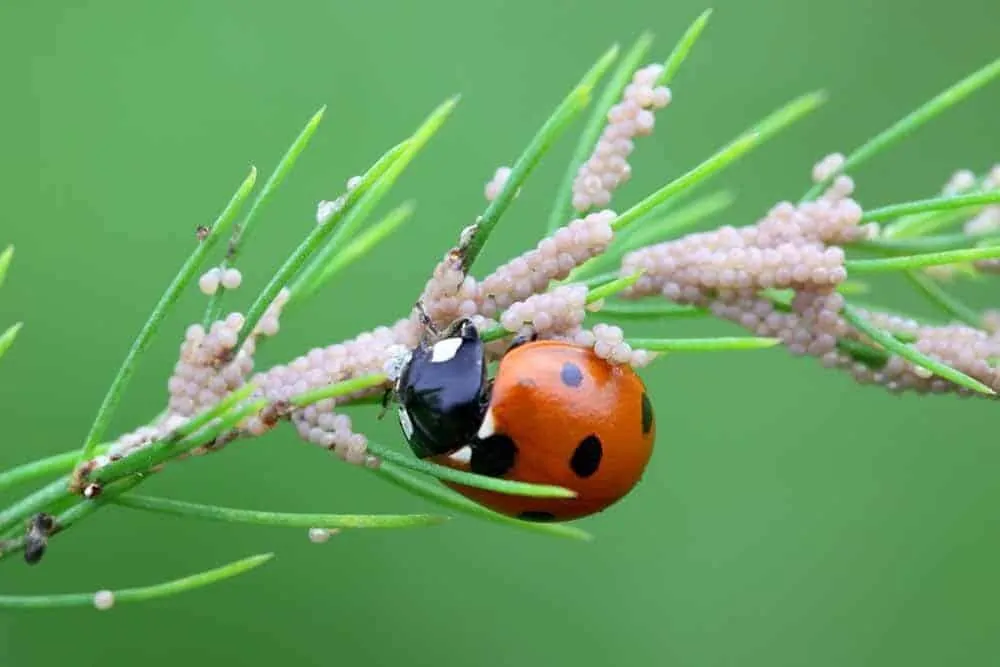
Insect Control In Your Garden
Insects can really do much damage to your plants. On the hand hand, the right insects can also be the saviors and defenders of your garden.
Going organic does not mean you have to relinquish control to the unwanted pests. We will cover some easy ways to prevent damage as well as attract the right bugs.
Insect Prevention
An ounce of preparation is worth a pound of cure. There are some simple techniques and principles that you can do to help ward off some insects.
Check out these 3 tips to help prevent damage to your vegetables:
1. Knowing the life cycles of insects will help – Squash borers are the bane of most gardeners. In some zones you can plant your crops later after they already laid most of their eggs.
Another tip that help in these life cycles is to rotate your crops each year to prevent certain insects from locating your crops. Some of these insects go dormant and return in the spring right underneath where your crops were.
Having a different crop may making them look elsewhere.
2. Checking Your Plants Often – Aphids are a common pest that many gardens face. Regularly checking your plants for signs of them will help before it gets out of control.
Most times you can easily get rid of these pests with your water hose.
3. Companion Planting to the Rescue – Interplanting can help in many ways with your crops. Sometimes, the other crop acts as a trap crop or masks the other plant with its essence.
Some plants and flowers will also attract beneficial bugs to help save the day.

Green thumb Gardener Book Recommendation:
Knowledge is certainly power. Having the right guide to what bugs are beneficial and how to attract them will certainly do wonders in your garden. The author Jessica really nailed it with this handy garden reference book that will surely help you manage your garden pests.
Good Bug Bad Bug: Who's Who, What They Do, and How to Manage Them Organically (All You Need to Know about the Insects in Your Garden) (Spiral bound) - Common
After a fascinating introduction to the predator and prey cycle and its importance to both wild ecosystems and home gardens, you'll meet dozens of pest-munching beneficial insects (the predators) that feast on garden pests (their prey). From ladybugs and lacewings to parasitic wasps and syrphid flies, these good guys of the bug world keep the natural system of checks and balances in prime working order.
They help limit pest damage and also serve a valuable role in the garden's food web. But, they won't call your garden home if you don't have the resources they need to survive.
Insect Prevention
Not all insects are bad for your plants. In fact, there are probably more harmless insects around than you think.
Bees are what helps pollinate your flowers and vegetables. You want to encourage them to come to your garden and also ensure you don’t do anything to harm them.
So what is the best way to attract the right insects.
Honestly, the best way is to ensure you have healthy plants and that starts with the soil. A good variety of plants is also necessary using techniques from companion planting.
Plants that don’t get off to the right start will naturally attract bugs that can harm them. Is this always the case?
No, but it is nature’s way of survival of the fittest in the plant world.
What Do You When All Else Fails
It happens in every garden even when things go right. Your vegetables get attacked there is really nothing you can do to have prevented it.
There are some tried and true organic products that can help to naturally get rid of pests without causing harm to the rest of the ecosystem.
Most pesticides not only can be harmful if ingested, but can also do some damage to the soil microbes or beneficial insects,
These products & methods seek to help without the nasty bite of conventional pesticides.
1. Good ole fashion handpicking – Yes, believe it or not this is the best one because it is free and easy to do. Obviously, it would be difficult on a large scale, but many pests are easily diverted with this method.
2. Beneficial Insects – Ladybugs and praying mantis are some of the best insects to have in your garden. These guys are like ninjas warriors eagerly defending your garden by preying on the bad bugs.
3. Soaps, Oils & Other Abrasives – This is a big category of products. Some of them include Neem oil, diatomaceous earth, and insecticidal soap.
The main drawbacks of these products is that they may not work right away and are non selective. These means they can harm the good bugs too, so be extra careful in your application.
There are quite a few other organic products that you can use, but starting with these will help for a majority of the issues you may encounter.

